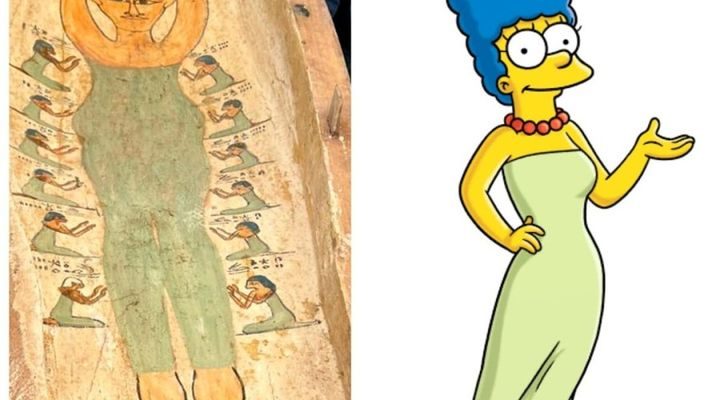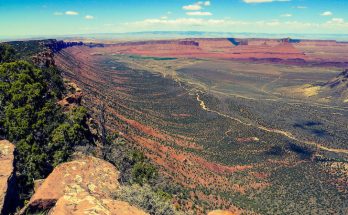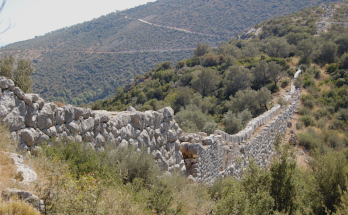Depiction of the goddess Nut on a recently discovered coffin, which was found at Al-Ghurifa site in Minya Governorate.
In a press conference organized by the Ministry of Tourism and Antiquities in the archaeological area of Al-Ghurifa in Tunah Al-Jabal, Minya Governorate; the Ministry announced the First-time Discovery of a Cemetery of High-ranking State Officials and Priests of the Modern State in the Al-Ghurifa Area of Tunah Al-Jabal in Minya dating between the new kingdom of Egypt (1570 – 1050 BC) and late period (664 BC – 332 BC).
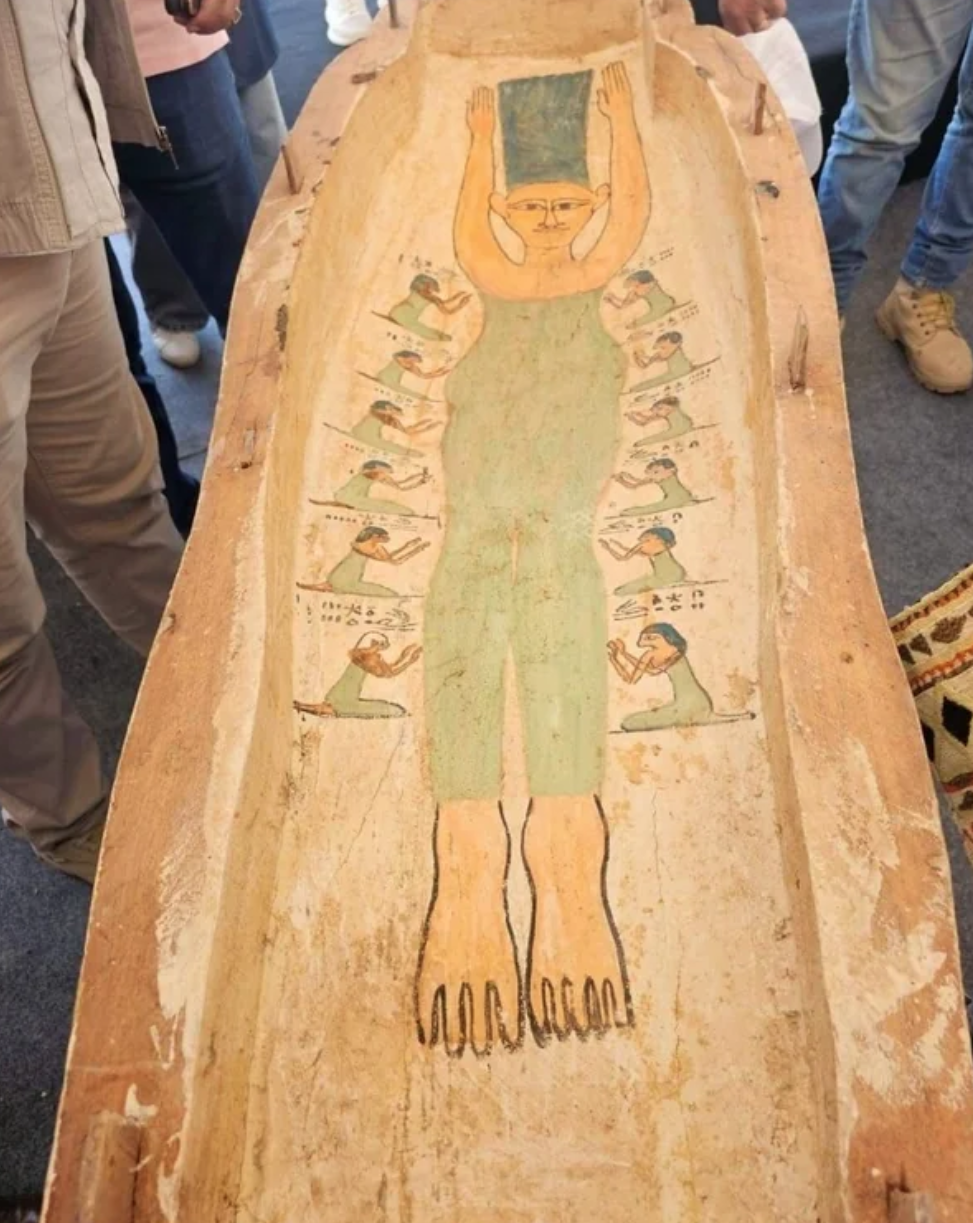
The Egyptian archaeological mission began its work in Al-Ghurifa in 2017, aiming to identify the location of the cemetery of the fifteenth administrative region during the modern state. In previous archaeological seasons, the mission managed to discover the late-period cemetery in the far north of the region, which consists of rock-cut tombs leading to burial chambers containing stone and wooden coffins, as well as over 25,000 shabti figurines, a large number of canopic jars, thousands of amulets, and some stone and wooden statues. A significant portion of these discoveries has been exhibited in Egyptian museums.
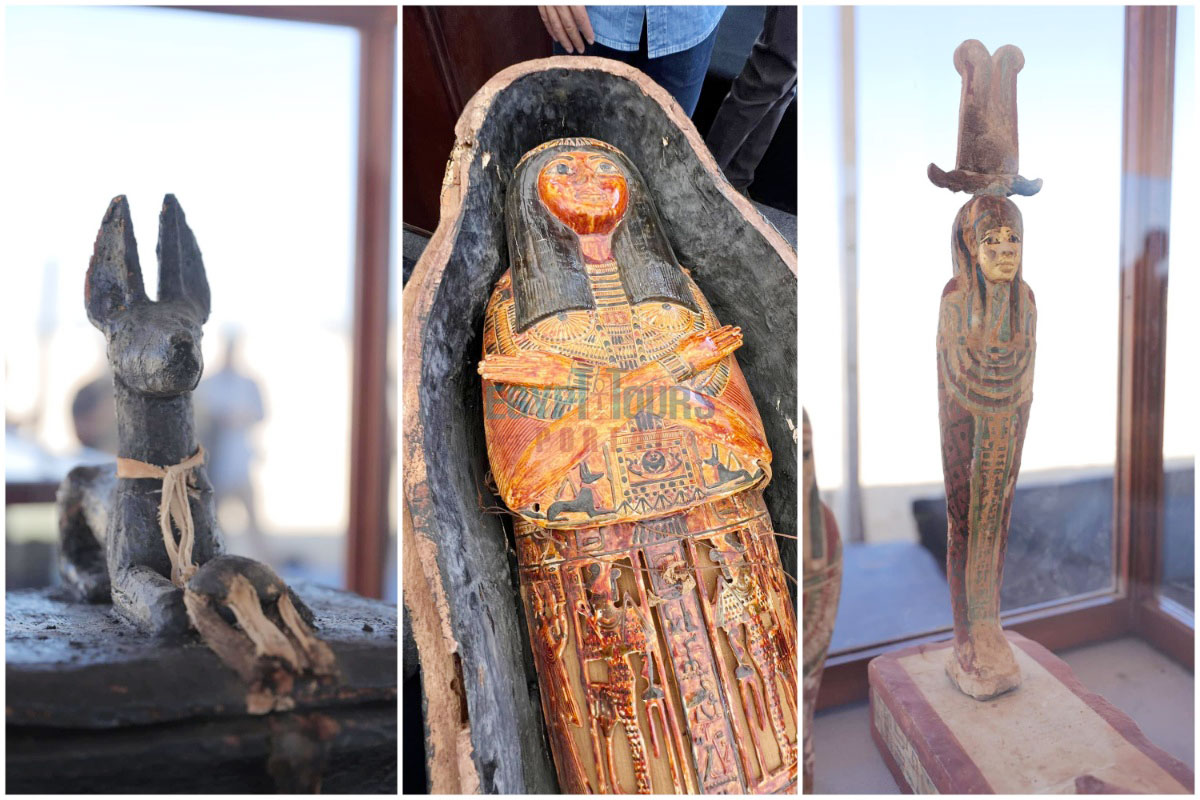
The conference also discussed the details of the archaeological discovery which was carried out by the Egyptian archaeological mission during the seventh season of excavations in this area, starting in August of the previous year. It pointed out that they discovered a cemetery of high-ranking state officials and priests from the modern state, containing numerous rock-cut tombs with hundreds of archaeological finds, including amulets, jewelry, stone and wooden coffins with ancient Egyptian mummies, as well as a collection of shabti figurines made of clay and wood representing some of the high-ranking officials such as “Jehuty Mes” who held the title of overseer of the cattle at the Temple of Amun, and “Nany” who held the title of Jehuty’s chantress.
It explained that this was the first time a cemetery of the late period had been discovered in the fifteenth administrative region of Upper Egypt. In the past, cemeteries were found in the old kingdom, the first transitional period, and the Middle Kingdom of Egypt in this region, east of the Nile River, in areas like Sheikh Sa’eed and Deir Al-Barsha, which contained rock-cut tombs of regional rulers and high officials.
The location of the regional cemetery between the new kingdom and the late period was unknown until the Egyptian mission started its excavations this season, beginning in August of the previous year. It added that the archaeological evidence suggests that part of this cemetery was reused in later periods, and many artifacts from the late period were discovered, such as various-sized shabti figurines, various types of pottery, alabaster, limestone, and faience vessels, as well as thousands of amulets and numerous stone and wooden coffins, some of which were inscribed and colored and contained well-preserved mummies. There were also a lot of magnificent stone and wooden statues.

A marvelous wooden coffin with inscriptions and colorings for Lady “Ta Di Iset” and the daughter of “Irt Heru” who is a high priest of Jehuty in the Al Ashmunin area was discovered. Two wooden boxes containing her specific canopic vessels were found next to her, along with a complete set of shabti figurines and a statue of Ptah Sokar. A scroll containing the first complete papyrus was found in the Al-Ghurifa area, preliminary studies indicate that it is approximately 13 to 15 meters long. This papyrus is associated with the Book of the Dead and is well-preserved and is planned to be displayed in the Grand Egyptian Museum.
